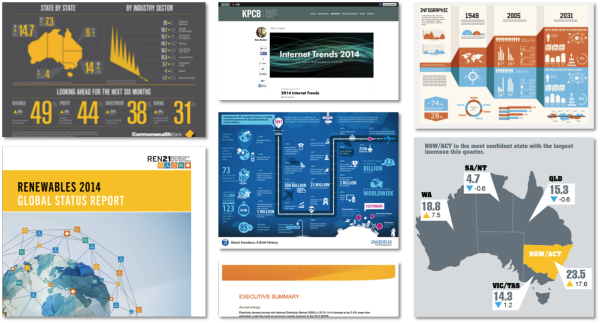Get WISER with Your AI Prompts - A guide for sales managers
Everyone’s wittering on about AI like it’s the second coming. But here’s the rub: if you give it half-baked prompts, you’ll get half-baked answers....
4 min read
Sam Elliott 25/06/2014 3:58:00 PM


Businesses are always looking for innovative ways to gain more traffic and customers online. Tactics range from the now nefarious keyword stuffing to the well-worn buzzword of 2013, ‘content marketing’. Most businesses understand the importance of content. Or should I say, they understand the long-standing phenomenon of creating material for people to consume now known as ‘content marketing’.
Marketers around the world have been incessantly and with increasing force chanting the simple mantra of “create good content” for what now feels like an eternity. However marketers have realised that with all this hype about content marketing and the proliferation of Internet access across societies and devices, we will be hit with a biblical flood of content and the only businesses escaping it will be those who have built great content arks. These businesses will be able to float above what one marketer has elegantly described as a sea of C***. The answer marketers are providing to this deluge is another simple slogan “don’t create good content, create great content”. Or if they are really creative an extension of this is "create a great content brand".
Beyond these apocalyptic visions and basic incantations remains the question that no one will answer.
How do we create content that people want to read, like, favourite, bookmark, share, and read again?
Most marketers will tell you, you need to be buyer oriented, authoritative, strategic and passionate. They point out what you need to do but not how to do it. While we all know the instant emotions and heartstrings that sites like Buzzfeed and Upworthy tug on, not every business has the ability to tap into a squirrel saving 16 puppies.
But, there is an answer that addresses all the above criteria for creating content and provides a methodology for getting it done, it also answers the need of positioning yourself in a prominent and well-respected position from which to generate business, that alternative is thought leadership marketing.
While thought leadership is most often associated with Nobel laureates and Fortune 500 CEOs, 'thought leadership' is accessible to any business and a thought leadership marketing strategy is something that is effective across all industries and provides solid results in the extremely competitive online market place. It focuses on the production and measurement of original content within the desired category or industry.
The driving force for this marketing strategy is market research. Thought leadership demands original thought, or thoughts that challenge the status quo, and market research answers that demand by providing new information from which to discern trends and illuminate areas of contention. By using market research businesses are able to provide fresh and innovative content for demanding audiences while constantly measuring and refining its reach, reputation and results.
There is just so much content out there. The normal answer to trying to cut through the noise is simply write better content but most people don’t provide a guide on how to do this. By using market research, thought leadership marketing solves exactly this problem. You can cut through the noise with content based on insight derived from market research. Good thought leadership increases your brand’s reputation and gives your buyers confidence in your product or service.

The uses of market research extend further than the creation of one-dimensional content. It can help in the creation of company umbrella messages and proof points, media releases, stakeholder engagement, SEO, and even sales material for Business Development Managers. A thought leadership marketing strategy supports more than just the marketing department, it supports the whole business, providing a solid foundation for the creation of content to be used as a medium of interaction with buyers at all stages of their journey and in all parts of the company. The ability to measure and refine afforded by the market research also provides the opportunity to continually improve your lead generation and customer relationships.
Some of the key ideals a thought leadership marketing strategy should include are:
These ideals are the foundation for any good thought leadership marketing strategy and they provide a measurable and accountable system for the otherwise complex challenge of creating original insightful content. Thought leadership doesn't have to be based on paradigm-shifting insights or Nostradamus-esque predictions. Instead, it can come from a directed and focused attention, centring on the points that research has shown matter to the buyer. By using well-designed market research you create that unique perspective buyers are looking for in their content.
Thought leadership deals in content that is original and research driven. It should be unbiased and driven by the buyer not the business. By using market research businesses can layer their content, creating a customer centric view that makes sense to the buyer.
Content marketing is most commonly a lead generation tactic based solely in the marketing department, it often involves repackaging content, creating content from secondary sources, the reuse or repurposing of content pieces and the weaving in of a product or service influence to the message.
Thought leadership marketing differentiates itself from this by creating original research-based and layered content, this allows businesses to organically take the lead (metaphorically and on search engines) with new insights and ideas. The layering involves using different parts of the research and putting it into multiple forms to spread the message. This way the buyer can continue their journey through your business constantly learning and establishing your reputation as a thought leader.

It is important to note that content marketing can be driven by market research and will be boosted by the research's input. Thought leadership marketing can be used and to some extent should be used in tandem with content marketing. However, thought leadership marketing keeps market research as its core and crucial element in the creation of content. It is not for replication and repurposing it is for leading discussions, building brands and establishing connections. Driven by market research, thought leadership marketing provides an answer to both the demands of original content creation and your business' need for lead generation.
If you would like to see a practical example of thought leadership marketing in action have a look at a blog about the Commonwealth Bank's Future Business Index by clicking here or if you would like to read more about using market research to create content and drive thought leadership click below to download ACA Research’s free Thought Leadership eBook.
Subscribe to our latest news and updates on HubSpot.

Everyone’s wittering on about AI like it’s the second coming. But here’s the rub: if you give it half-baked prompts, you’ll get half-baked answers....

The business world is falling head over heels for AI—and who can blame it? With promises to reduce grunt work, uncover insights, and turbocharge...

Search is evolving - fast. For two decades, SEO has revolved around Google’s algorithm: keywords, backlinks, metadata, and page speed. But with the...